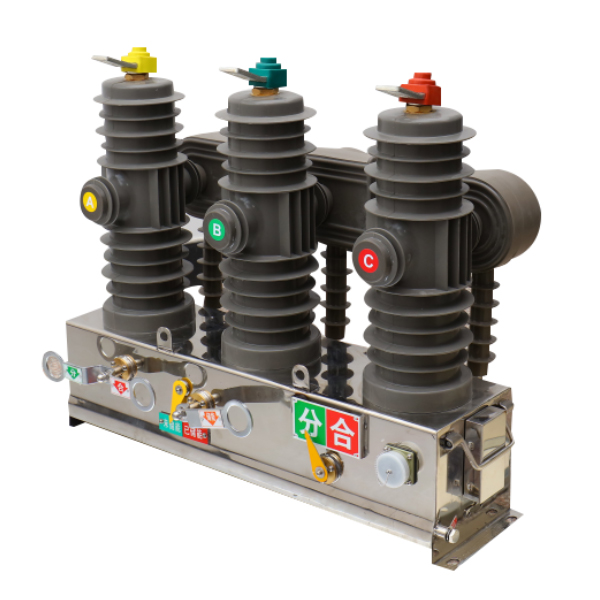Why Choose an Outdoor Circuit Breaker?
In today's rapidly growing industrial and residential power systems, safety, reliability, and efficiency are essential. Among the critical components that guarantee stable and secure electrical distribution, the Outdoor Circuit Breaker plays a central role. Whether installed in substations, large factories, commercial facilities, or residential outdoor environments, this device ensures power continuity while safeguarding both equipment and human life from electrical hazards.
At Shanghai FATO Group Co.,Ltd., we specialize in manufacturing high-performance Outdoor Circuit Breakers that meet international standards while providing customized solutions to meet diverse application needs. Let us explore why Outdoor Circuit Breakers matter, how they function, and why selecting the right model is crucial for modern electrical infrastructure.
What Is an Outdoor Circuit Breaker?
An Outdoor Circuit Breaker is an automatic electrical switch designed to protect an electrical circuit from damage caused by overcurrent, overload, or short circuits. Unlike indoor circuit breakers, these are specifically engineered to withstand external weather conditions, including rain, dust, UV radiation, and extreme temperatures.
Outdoor Circuit Breakers are widely applied in:
-
Power transmission and distribution networks
-
Industrial plants and factories
-
Renewable energy installations (solar farms, wind energy systems)
-
Commercial and residential buildings with external power connections
-
Substations requiring weather-resistant safety equipment
Key Features and Parameters of Outdoor Circuit Breakers
When evaluating a circuit breaker, its technical specifications define its performance and suitability for different environments. Below is a summary of the essential parameters of our Outdoor Circuit Breaker products:
Main Technical Specifications
-
Rated Voltage (kV): 12kV / 24kV / 36kV / 40.5kV
-
Rated Current (A): 630A / 1250A / 2000A / 3150A
-
Rated Short-Circuit Breaking Current (kA): 20kA / 25kA / 31.5kA / 40kA
Product Parameter Table
| Specification | Value Options |
|---|---|
| Rated Voltage | 12 / 24 / 36 / 40.5 kV |
| Rated Current | 630A / 1250A / 2000A / 3150A |
| Breaking Capacity | 20kA / 25kA / 31.5kA / 40kA |
| Power Frequency | 50Hz / 60Hz |
| Operating Mechanism | Spring / Motor |
| Insulation Medium | SF6 / Vacuum / Air |
| Degree of Protection | IP54 – IP67 |
| Mounting Options | Pole-mounted / Ground-mounted |
| Applicable Standards | IEC, GB/T, ANSI |
Why Do You Need an Outdoor Circuit Breaker?
Electrical accidents often result in expensive downtime, equipment damage, and even personal injury. Installing an Outdoor Circuit Breaker is not merely an option but a necessity in modern power systems. Here are the key reasons:
-
Enhanced Safety – Prevents overloads, short circuits, and fire hazards.
-
Weather Resistance – Designed for long-term outdoor use under extreme environmental conditions.
-
Reliable Operation – Offers consistent performance across industrial, commercial, and residential networks.
-
Flexibility in Installation – Available in multiple mounting types and insulation media.
-
Cost-Effective Maintenance – Long service life with reduced maintenance requirements.
How Does an Outdoor Circuit Breaker Work?
The working principle of an Outdoor Circuit Breaker revolves around detecting electrical faults and disconnecting the faulty part of the system within milliseconds.
-
Normal Operation: Current flows seamlessly through the breaker contacts.
-
Fault Detection: Sensors identify abnormal conditions such as overcurrent or short circuit.
-
Arc Extinguishing: During fault interruption, the arc chamber uses SF6 gas, vacuum, or air to extinguish the arc.
-
Disconnection: The breaker contacts separate, isolating the faulty section to protect the system.
-
Reset or Auto-Reclose: Depending on the model, the breaker can be reset manually or automatically reclose after fault clearance.
This mechanism ensures minimal disruption and maximum protection for both equipment and personnel.
FAQ – Outdoor Circuit Breaker Common Questions
Q1: What is the difference between an Indoor and an Outdoor Circuit Breaker?
A1: An Indoor Circuit Breaker is designed for controlled environments, free from dust, moisture, and UV exposure. In contrast, an Outdoor Circuit Breaker is engineered with weatherproof housing, corrosion-resistant materials, and higher IP protection to withstand environmental stress.
Q2: How often should an Outdoor Circuit Breaker be maintained?
A2: The maintenance interval depends on the operating environment and load conditions. Generally, inspection every 12 months and preventive maintenance every 24–36 months are recommended. For harsh environments, more frequent checks may be necessary to ensure reliable operation.
Q3: Can an Outdoor Circuit Breaker be customized for specific voltage levels?
A3: Yes, manufacturers like Shanghai FATO Group Co.,Ltd. offer customization in rated voltage, current, breaking capacity, and mounting options to match your specific project requirements. This flexibility ensures optimal performance across different industries.
Final Thoughts
The Outdoor Circuit Breaker is more than just a protective device; it is the backbone of modern electrical distribution systems. By ensuring safety, reliability, and weather resistance, it supports sustainable power supply in diverse industries.
For businesses and utilities seeking advanced solutions, partnering with Shanghai FATO Group Co.,Ltd. means investing in long-term reliability and professional expertise.
📩 Contact Shanghai FATO Group Co.,Ltd. today to discuss your project requirements and secure a trusted power protection solution tailored to your needs.






